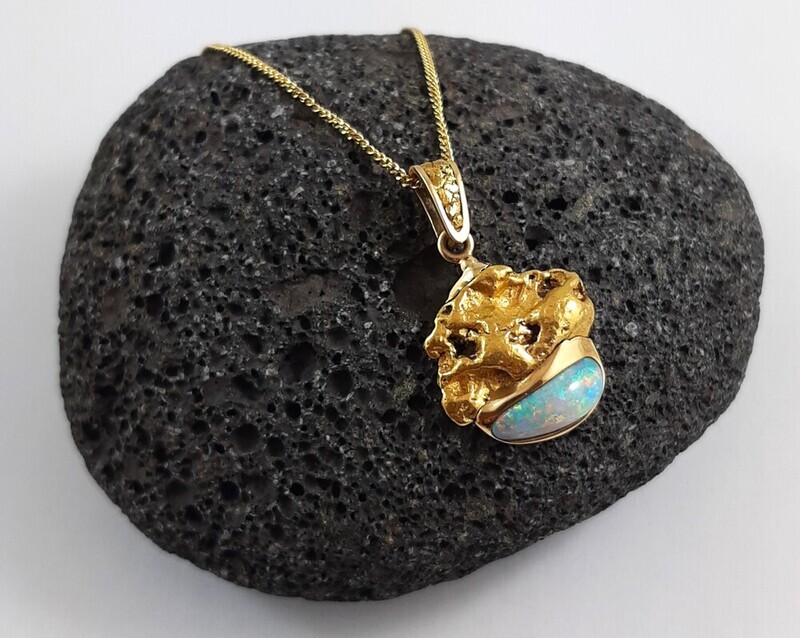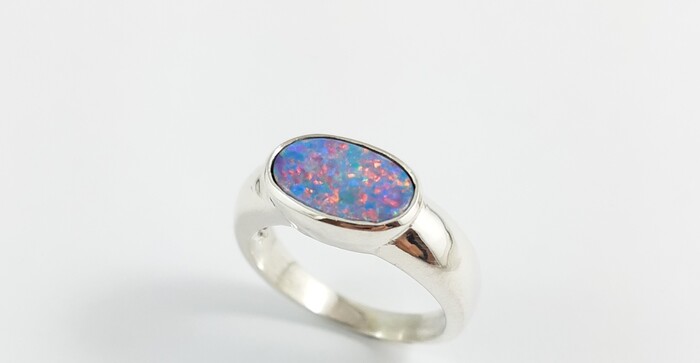Opal, with its play-of-colour and captivating patterns, is undoubtedly one of the most enchanting gemstones in the world. As the birthstone for October, opal holds a special place in the hearts of many. But what exactly is this mesmerizing stone, and what makes it so unique? Let’s delve into the world of opal.
What is Opal?
Opal is a hydrated amorphous form of silica. Unlike most gemstones, opal is not crystalline but is made up of tiny silica spheres that diffract light to display various colours. This phenomenon, known as “play-of-colour,” is what gives opal its distinctive and breathtaking appearance. Depending on the conditions under which it formed, opal can take on many colours, from milky white and gray to vibrant reds, blues, and greens.
Where is Opal Typically Sourced From?
While opal deposits can be found worldwide, Australia dominates the opal market, producing an estimated 95% of the world’s precious opal. The town of Coober Pedy, often referred to as the “Opal Capital of the World,” is a significant source. Other notable opal-producing regions in Australia include Lightning Ridge and Andamooka.
Outside of Australia, opal mines can be found in countries like Ethiopia, Mexico, Brazil, and the United States, particularly in the state of Nevada.

Historical Popularity of Opal
Historically, opal was highly valued and sought after in various cultures. The ancient Romans, for instance, cherished opal as a symbol of hope and purity. They believed it to be the most precious and powerful gemstone because it contained the colours of all other gems.
In the Middle Ages, opal was considered a lucky gemstone, thought to possess the virtues of each gemstone whose colour appeared in its sheen. However, its reputation took a hit in the 19th century, many think due to Sir Walter Scott’s novel “Anne of Geierstein,” where an opal-wearing character met a tragic fate. This association led to a temporary decline in opal’s popularity and many generations considering it unlucky.
Interesting Facts About Opal
- Name Origin: The name “opal” is derived from the Sanskrit word “upala,” meaning “precious stone,” and the Greek word “opallios,” translating to “colour change.”
- Varieties: There are several types of opal, including black opal (with a dark body colour), white opal (light body colour), and fire opal (translucent with fiery orange-red hues).
- Opalizing Fossils: In rare instances, opal replaces the organic material in fossils, leading to opalized fossils. These unique specimens provide a vibrant glimpse into the past.
- Care: Opals contain water, making them somewhat delicate. They can crack if subjected to sudden temperature changes or if they dry out. It’s essential to store them away from direct sunlight and heat.
Opal is not just a birthstone for October; it’s a gemstone with a rich history, diverse origins, and an allure that has captivated humanity for centuries. At The Bench Jewellery, we appreciate the beauty and significance of opal and offer a range of opal jewellery pieces that celebrate its unique charm.
Learn more about birthstones and other gemstones for jewellery on our Resources page.
Or, connect with us at one of our BC locations! Kamloops Kelowna Chilliwack

